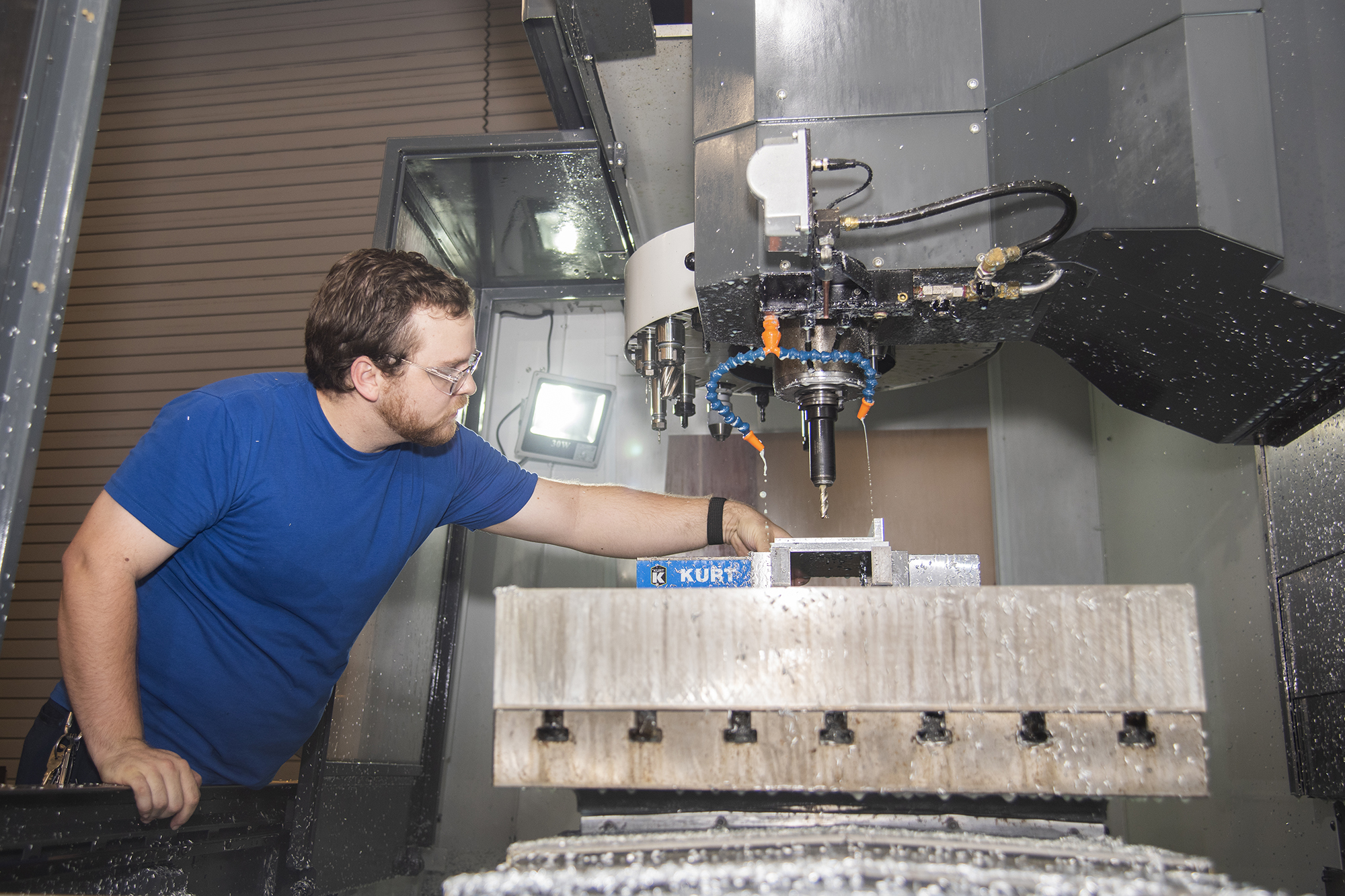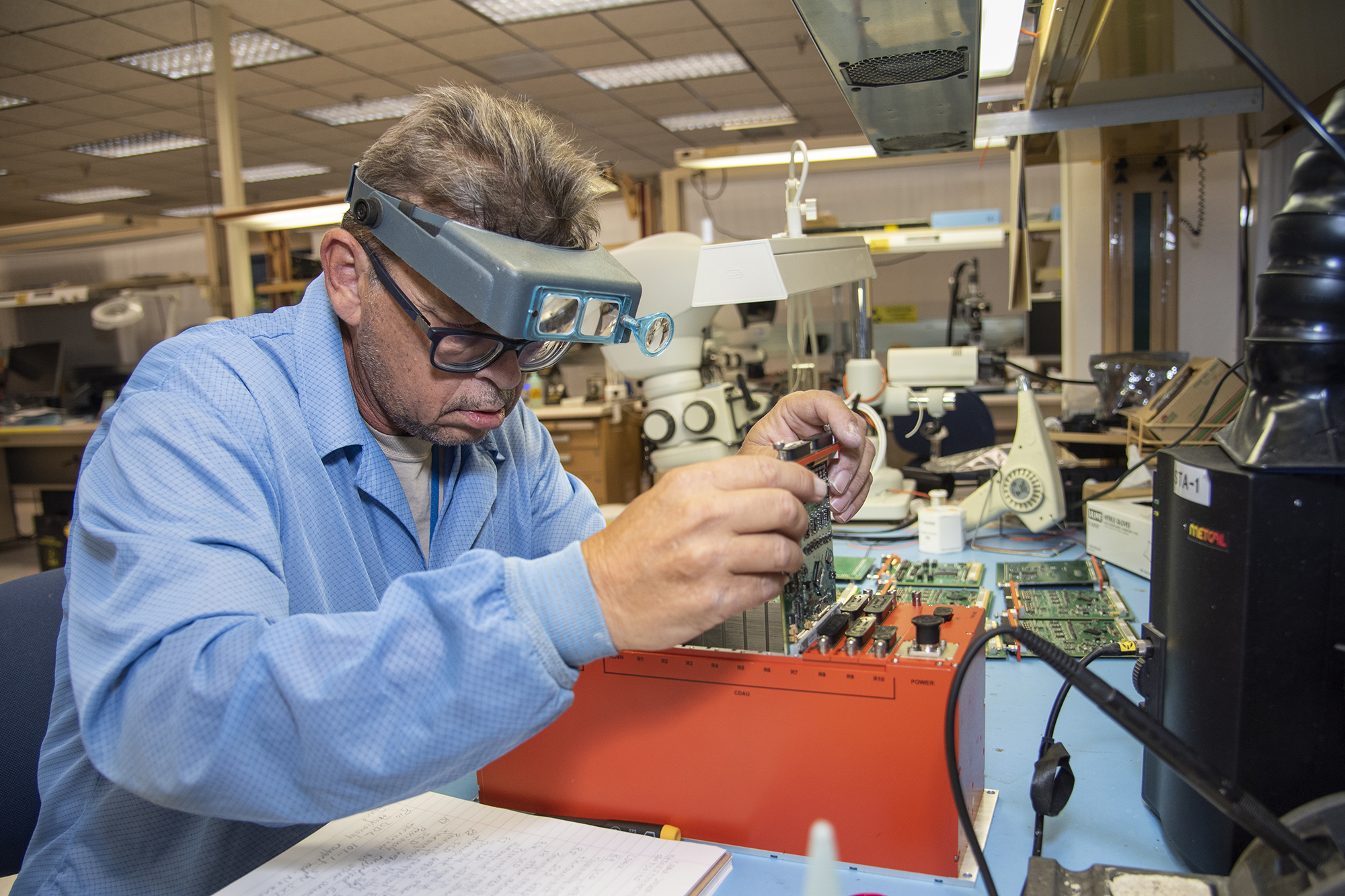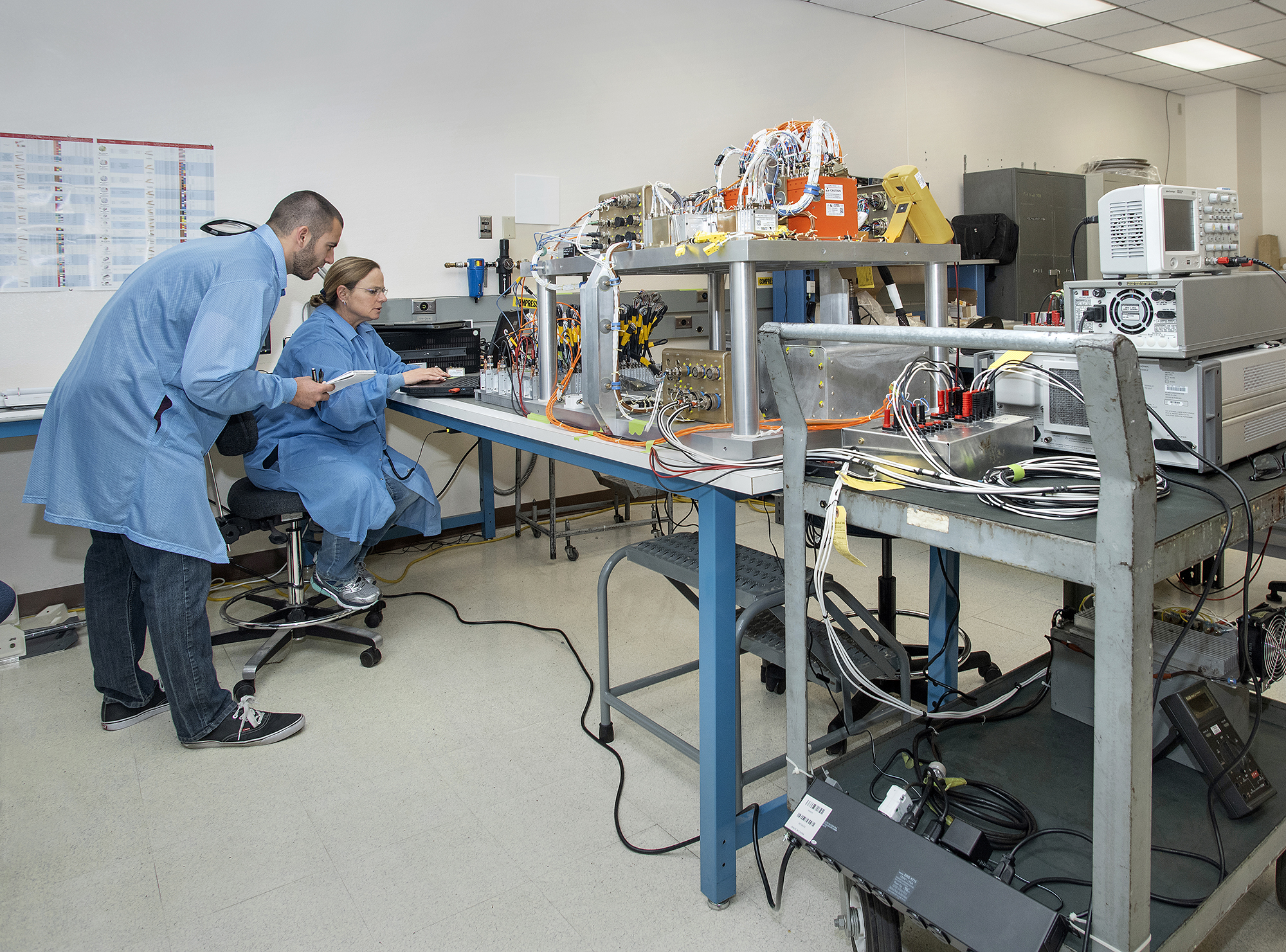
When the Orion spacecraft is on the launch pad preparing for liftoff atop the Space Launch System (SLS) rocket, the crew module will have a launch abort system (LAS) mounted on top. If there is a problem on the launch pad or during the first few minutes of the ascent to orbit, astronauts could use the system to separate from the rocket and escape to safety.
NASA’s Armstrong Flight Research Center in Edwards, California, has played a key role in developing systems and subsystems for an upcoming test of the LAS in 2019, called Ascent Abort-2 (AA-2).
During the AA-2, a test article sized and weighted to represent Orion will launch on an abort test booster from Cape Canaveral Air Force Station in Florida. At that point, the LAS abort motor will fire to propel the Orion test article to a safe distance away from the rocket. All required data will be captured and stored on 12 NASA-developed data recorders enabled with GPS and ejected from the crew module before it splashes into the water.
Armstrong is designing, acquiring, integrating and supporting the developmental flight instrumentation (DFI) subsystem that will collect and return engineering data to validate computer models of the spacecraft’s LAS performance prior to travel with a human crew.
“The DFI is designed to collect critical test data from 890 sensors across all four modules of the flight test vehicle including the LAS, the crew module, the separation ring and the booster,” said Gary Martin, Armstrong’s Orion AA-2 project manager.
Armstrong specializes in instrumentation and integration of systems and was chosen for these tasks because of the center’s expertise, he added. The first of two major data acquisition systems departed Armstrong in May for integration into the Orion test article at NASA’s Johnson Space Center.

In addition to collecting all the data for the crew module, the crew module data acquisition system will also collect the LAS research and store it on the data recorders. Also contributing to the data collection is a digital camera system that will look up at the crew module and encode and transmit video of the separation, he added.
Along with a backup data acquisition system and additional sets of electronics, the system will serve as the central nervous system of the stack. The stack is the combination of the LAS, the crew module, the separation ring and the booster that connects the test capsule to the booster.
Armstrong staff continue to work on the LAS electronics. One set is expected to be complete by the middle of August and shipped to NASA’s Michoud Assembly Facility in New Orleans, where Lockheed Martin is assembling those components, Martin said. The other three sets of electronics will be integrated at NASA’s Kennedy Space Center in Florida starting in September.
Armstrong also acquired the booster rocket to simulate a ride on the SLS, along with avionics, flight software and supporting elements from Northrop Grumman (formerly Orbital ATK) through an agreement with the Air Force. Northrop Grumman is manufacturing the launch vehicle under its Sounding Rocket Program 3 contract with the Air Force and Missile Systems Center (SMC). Armstrong entered into an agreement with SMC in 2006 for the Air Force to acquire and provide the booster to NASA.
The crew module is currently being outfitted at Johnson and will depart in August for an acoustic test planned at NASA’s Plum Brook Station in Sandusky, Ohio. Following the test, the crew module will return to Johnson in September for the installation of the separation ring. The combined elements then will ship to Kennedy for final integration, stacking and launch.”

AA-2 marks the second dedicated LAS test. The first flight test of the abort system in 2010, called Pad Abort-1 (PA-1), was an effort led by Armstrong for the Orion program based at Johnson. During PA-1, an abort motor rocketed the test article and launch abort stack away from the launch pad. AA-2 will test the LAS during ascent, where it will encounter the greatest structural stress.
“This is different from the PA-1 test because you are inflight and you have that booster,” Martin said. “With PA-1 the ground wasn’t going to move. For this test, the abort test booster is moving at somewhere just above the speed of sound. This is a much more critical test condition for separation. You want to get away from that launch vehicle as fast as possible because the reason you aborted is something is going wrong.”
AA-2 provides the only opportunity to test a fully active launch abort system during ascent before flying crew and verify it works as predicted in the event of an emergency, making Armstrong’s contributions and support for the data acquisition system critical for future deep space exploration missions.
NASA will launch an uncrewed Orion spacecraft on the SLS rocket for Exploration Mission-1 and send the spacecraft around the moon to test systems prior to the first flight with astronauts on Exploration Mission-2.

























